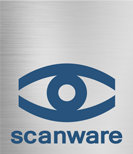Print on Foil

Home / Your Inspection Objects / Foils / Foil Printing
■Foils - Print on Foil
Print on foil is a common method for labelling and individualising packaging. The customer can read the contents on the film, or the manufacturer can mark his product to increase safety, for example through warnings, listing of allergens, as well as serialisation. A common material is aluminium foil and PVC foil, as these are water-repellent but therefore not absorbent. In addition, the printing surface is not always flat, so not all printing processes are suitable.
Late Stage Customisation
This process is used when products and packaging are only finished in digital printing for the respective market before delivery. For example, blister packs are always designed in the same way, but then printed with the code that matches the folding box for delivery to a specific country. For example, crypto codes and solder can be printed. A local inspection with a small field camera is suitable for inspecting these prints.
In order to simplify the teach-in process, especially for frequently changing formats, scanware has specially developed automatic teach-in using PDF for producers and packagers. The pdf that is sent to the printer is also used by the system to teach in the data captured and checked by the camera. This saves time and minimises the risk of teach-in errors by the user.
Printing on large foil widths
Another common approach to foil printing is full-web foil printing. The entire surface is printed continuously with a variety of elements such as logos, plain text and codes. Here, thanks to the use of multiple cameras and multiplexers, the entire printed film is inspected.
Various factors have to be taken into account by the inspection system: Machine run and speed on the one hand, as well as font size as a parameter are the factors that determine the choice of hardware. In addition, scanware has developed software features that compensate for film movement and has implemented its own OCV/OCR detection in order to be able to detect the up to 5,000 objects per image at high speed.
■Recommended inspection system for print on foil
Depending on the inspection task, different inspection systems are used. For Late Stage Customisation, Code Inspection may be sufficient. If the foils are inspected after sealing, the print can be degraded by the sealing and the pattern of the sealing plate can impair the reading. In this case, a high-resolution inspection becomes necessary. Likewise, full foil lanes require a high-resolution print inspection and the use of several cameras.
Highlights of Code Inspection SIGNUM 2DC
- Intuitive, user-oriented operation as well as guided learning run for fast start of work on the line.
- Reading of only the relevant areas enables very high reading speed of up to 80 barcodes/second
- Reading independent of rotational position at transport speeds of up to 6m/s
- Different designs for precise integration into your system
Highlights of the Print Inspection SIGNUM HR
- The powerful, format-free greyscale system offers high speed, integrated illumination and outstanding software
- Intelligent character library as well as mask shifting
- Multiple camera system with scanware-developed multiplexer for particularly fast evaluation
- Automatic learning run and error analysis in format test as well as mask shifting
With pleasure we arrange an appointment with you for a personal discussion.
Blisters are inspected for pores and deformations.
Deformations in filled PVC blisters are detected before sealing.
The quality of sealing foil is inspected at high speed - even for wide foils.

